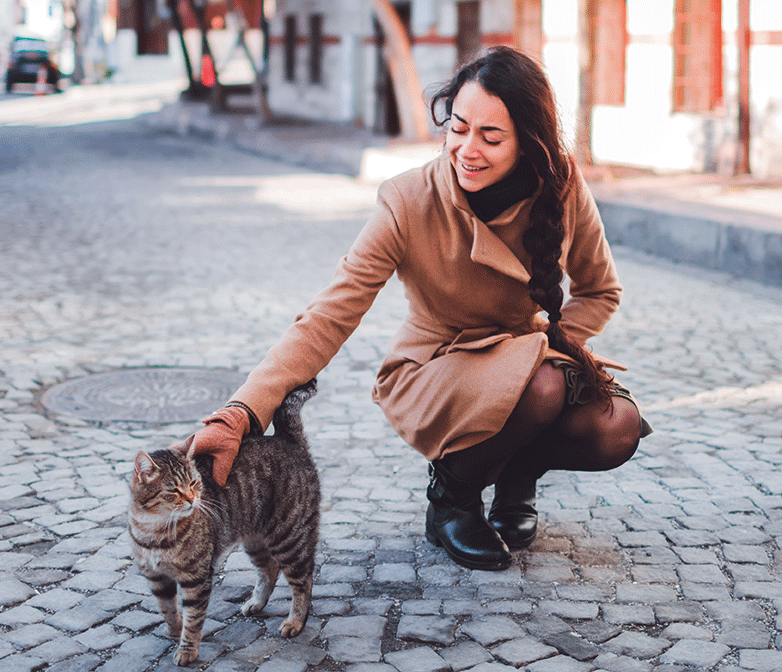Activists and stray welfare organisations say the right steps could be crucial in reuniting an animal with its family, helping find the animal a permanent home or ensuring its safety.
Dr Sara Elliott of the British Veterinary Hospital says most strays or lost pets are scared and anxious — rather than aggressive — and they need to be approached slowly and ideally by crouching down to their level. “Dogs can then be secured with a lead/makeshift lead as their personal safety needs to be considered,” she adds. “Cats, on the other hand, can be encouraged by offering food and then placing them in a cat basket or a secure container.”
While securing a stray or lost pet, Dr Elliott advises you ensure your own safety or the safety of your own pets at home by following local guidelines. “We have not had a case of rabies in this country for more than 15 years and are considered a very low-risk country. These animals who are down on their luck can hold other diseases, which can affect your own pets or in some cases, yourself. The municipality rule is that if any stray dog or cat is found, they need to be reported for collection as a precautionary measure — this will prevent anyone from getting bitten.”
Seeing a stray dog or cat tugs at the heartstrings, but Dr Elliott says not all animals wandering the streets are abandoned. “It could be someone’s pet that has wandered off. Before you rescue it you should first try and get through to the owner. Pets usually have a collar on them. The ideal thing to do is to take them to the nearest vet and check if they have been microchipped — this is the fastest and most efficient way to find the owner. The only other way is if the owner has alerted communities through social media or put up posters of a lost pet.
People can actually do more than secure the animal and reach out to welfare organisations, which are already at stretching point with abandoned pets.
Kay Ivanova, founder of 38Smiles, a Dubai cat and dog rescue and adoption organisation, says instead of simply rescuing a stray a long-term solution is needed to combat the overriding issue. “People need to understand rescuing one stray animal will not change things much. The only solution is trap-neuter-return, a programme through which free-roaming cats are trapped, sterilised and returned to the locations they were found.
Debbie Lawson, a volunteer who works with animal welfare groups in the UAE, says there is a huge free-roaming cat population in the UAE in addition to many abandoned animals.
“If you find a stray kitten, please don’t immediately pick it up — the mother may well have gone scavenging for food,” she says. “Observe from a distance. If you are too close she might not return to the kitten.”
Lawson says a would-be rescuer should always ask themselves, ‘can I change this animal’s life for the better?’ “If not, then leave it alone,” she advises. “You can feed stray animals, but not too often and near the garbage. They have to survive in their environment and if they are supported with regular feeding, it can be a disaster when that person moves away. That is a cruel end to a good intention.













